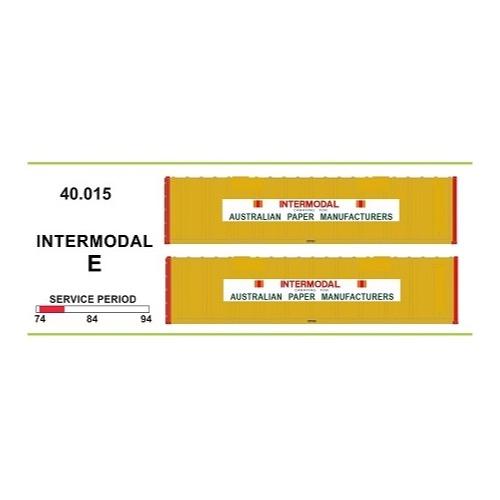
Hornby R40147 OO GNER Mk4 DVT
Built at Metro-Cammell's Washwood Heath factory, 314 Mk4 coaches were produced between 1989 and 1992. They were built specifically for use on the newly electrified East Coast Main Line, along with hopes that a second order for the West Coast Main Line would be placed at a later date, although this second order never transpired. Mk4 coaches featured many improvements over the Mk3s such as push-button operated plug-type doors, fully sealed gangways and a designed top speed of 140mph. Much of the Mk4 design was based upon the Advanced Passenger Train. In particular, Mk4 coaches feature sides profiled to allow a tilt of up to 6° with newly fitted tilting bogies.
Mk4s entered service in 1989 and helped drive a significant increase in passenger traffic. With privatisation in 1996, all Mk4 coaches were sold to Evershot Rail Group who have since leased them out to the holder of the InterCity East Coast Franchise. The franchise was initially awarded to Great North Eastern Railway (GNER) and has since been operated by National Express East Coast, East Coast, Virgin Trains East Coast and London North Eastern Railway (LNER) owned by the Department for Transport.
Between October 2003 and November 2005 Bombardier Transportation, under contract from GNER, commenced refurbishment of the Mk4 stock, fitting new seating arrangements and introduced onboard Wi-Fi, a first for British rail services. This refurbishment programme was called 'Project Mallard' named after the Mallard steam locomotive, built in the 1930s by the London & North Eastern Railway and holder of the world speed record for steam locomotives.
Although Mk4 coaches have spent most of their lives on the ECML, there are plans to cascade them down to other lines due to the introduction of the Class 800 and Class 801 IEPs.
Specification
- Item Length - Without Packaging (cm): 33
- Item Height - Without Packaging (cm): 5
- Item Width - Without Packaging (cm): 3.5
- Item Weight - Without Packaging: 0.2
- Item Scale: 1:76 Scale 00 Gauge
- Finish: Painted
- License: No
- Colour: Blue
- Gauge: OO
- Operator: GNER
- Designer: Met Cam
- Livery: GNER
- Minimum Curve (mm): Radius 2
- Number of Parts: 1
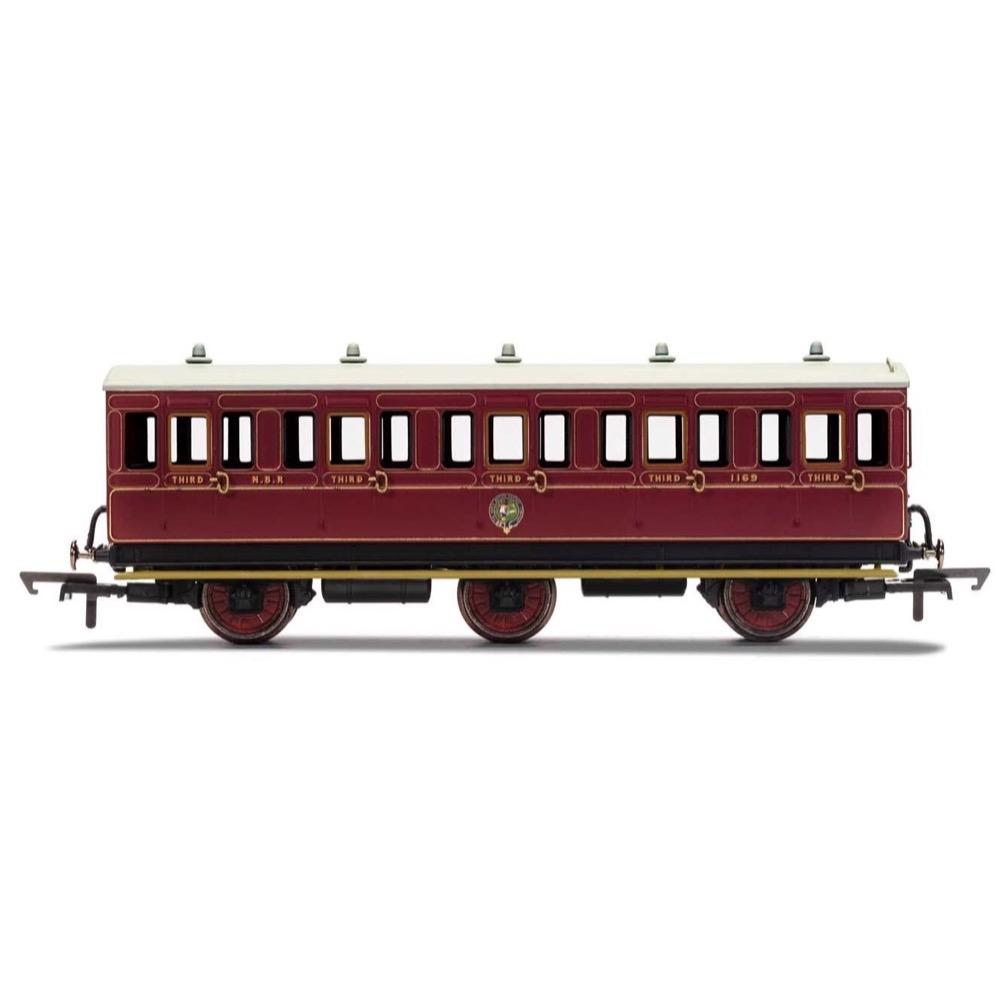
Hornby R40136 OO NBR 6 Wheel Coach 3rd Class Fitted Lights 1169
This six wheeled coach is a representation of the many which served on the North British Railway (NBR) in the late 19th and early 20th century.
Small coaches such as this six wheeled coach proved especially good at branch line work where their small size enabled the traversing of tight radius curves, whilst lower passenger numbers meant their small size was more acceptable and enabled trains to be hauled by smaller engines. This NBR coach is modelled as having step boards to enable access at stations with low platforms and gas lamp lighting.
This model also features our new Maglight system which allows coach lights to be turned on and off using a magnetic wand, removing the need for track pick-ups which would increase rolling resistance.
Specifications
- Item Length - Without Packaging (cm): 16
- Item Height - Without Packaging (cm): 5
- Item Width - Without Packaging (cm): 3.5
- Item Weight - Without Packaging: 0.07
- Item Scale: 1:76 Scale 00 Gauge
- License: No
- Finish: Painted
- Colour: Red
- Gauge: OO
- Operator: NBR
- Livery: NBR
- Minimum Curve (mm): Radius 2
- Number of Parts: 1
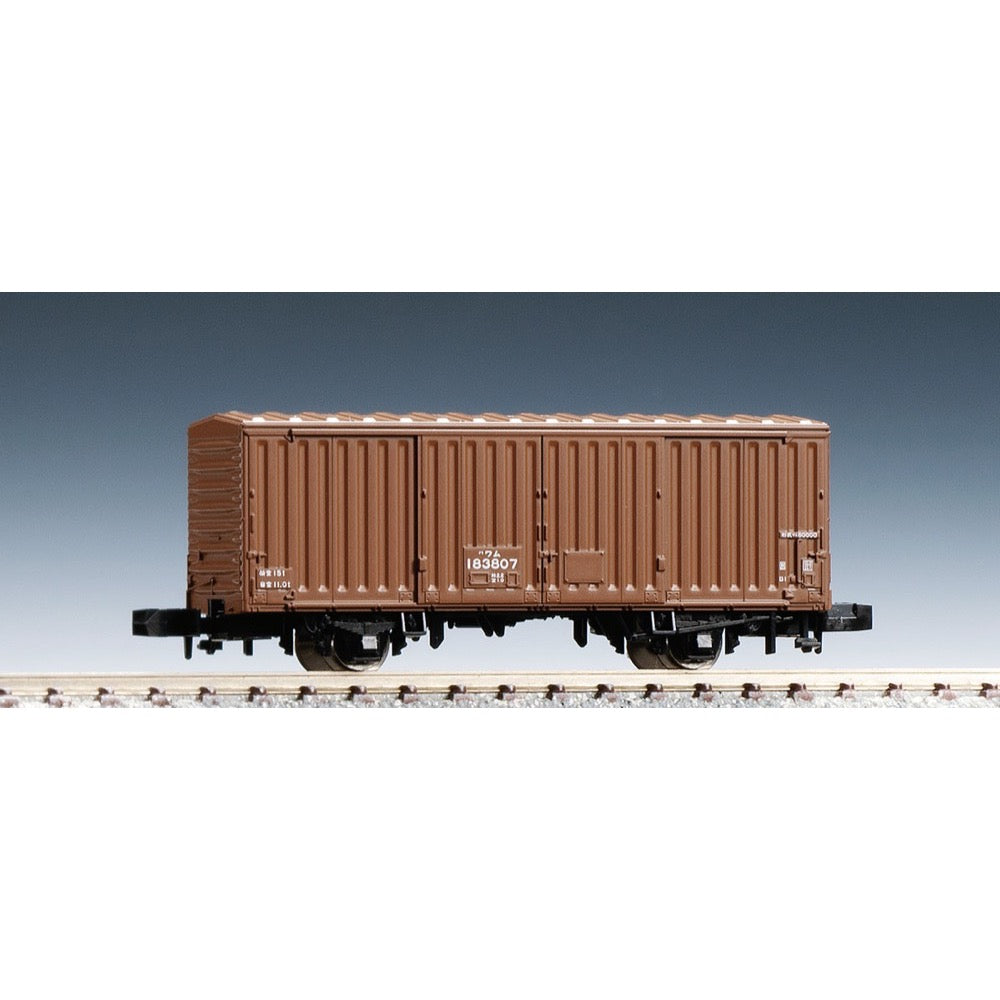
Tomix 8734 N WAMU Type 80000 mid era model
The WAM80000 series is a two-axle covered freight car manufactured from 1960.
The mid-model series manufactured from 1968 was added to the fleet when the timetable was revised in the same year, changing the maximum speed of freight trains to 75km/h. The exterior was changed to a pressed structure roof, and the cars were manufactured until 1970.
Production resumed in 1975, when the wheelbase was increased by 260mm, becoming the 280000 series.
Features
- Newly produced reproduction of the mid-model WAM80000 type with a short wheelbase, manufactured after 1968
- Reproduces the underfloor with a different wheelbase distance to the conventional product <2714>
- Car number (HAWAM183807) is printed
- Can pass through mini curves (when coupled with a locomotive capable of passing through mini curves)
Includes
Vehicles
- WAM183807

Steam Era Models R26 HO L Sheep Wagon Kit
L Sheep Wagon Kit
The steel framed sheep wagons represented by this kit were built in batches from 1896 up to 1925 and for many years were included in the consists of goods trains all over the state. They featured a gable roof and were numbered from 1 to 1252. Wagons 1 to 452 had the brake cylinder on the opposite side of the wagon to the handbrake, whilst 453 to 1252 had the handbrake on the same side as the brake cylinder.
This kit specifically represents wagons 453 to 1252, however a small alteration to the solebars, detailed in the assembly notes will allow a model representing wagons 1 to 452 to be constructed Fifty bogie sheep wagons, coded LL, were built at Newport in 1928. The design was based on the four wheel L wagon, however the LL featured around roof and was wider than the L. More four wheel wagons followed, with L1253 to 1332 built in 1938 and L1333 to 1432 followed in 1953. These last two batches were constructed of Cor-Ten steel and featured a round roof. With the closure of many branch lines in the 1970s the fleet of livestock wagons was gradually reduced in number so that by 1976 there were only 697 sheep wagons remaining on register. Further reductions followed until V/Line (as the Victorian Railways had become) finally withdrew from the carriage of livestock in October 1986.
Includes etched details.
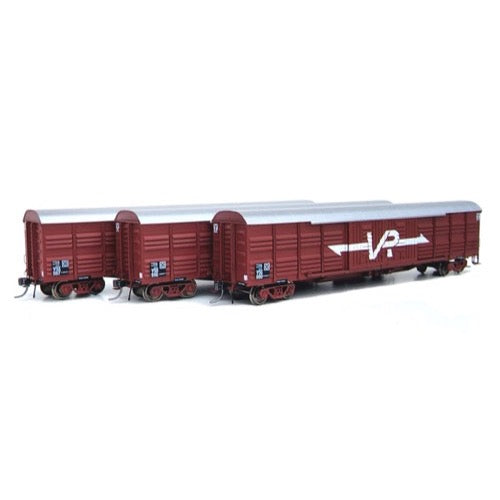
On Track Models HO VR VSX VR Large Logo Pack 9 3 pack
There were 250 VSX Louvre Vans built for the Victorian Railways between 1972 & 1976. The initial batch of 100 were built by the Ballarat North Workshops, with the Newport Workshops building a further 50 wagons. The final batch of 100 Vans were built once again by the Ballarat North Workshops.
Gauge convertible, they have been used extensively across mainland Australia on both standard gauge and on their own native broad gauge. They have visited all of the major state capital cities and rail centres throughout Australia.
From carrying general goods, pet food, newsprint, and in later years bagged rice, these 56’ Louvre Vans have proved to be a versatile wagon and the backbone of the Victorian Railways.
These models feature opening sliding doors, checker plate pattern on the internal floor surface, cargo barriers, a choice of plain pattern or louvre doors, and versions with and without the end louvre on the roof panel. They also come with Genuine KD Metal Couplers, and metal pin point axles.
There are 6 body styles produced across 11 different packs. Each pack contains 3 ‘HO’ Scale models.
Specification
- Three HO Scale VSX Models
- Style: 3 VSX Vans with Large VR logos
- Wagon numbers: VSX 880, VSX 916, & VSX 987
- Era covered: 1970's - Mid 1980's
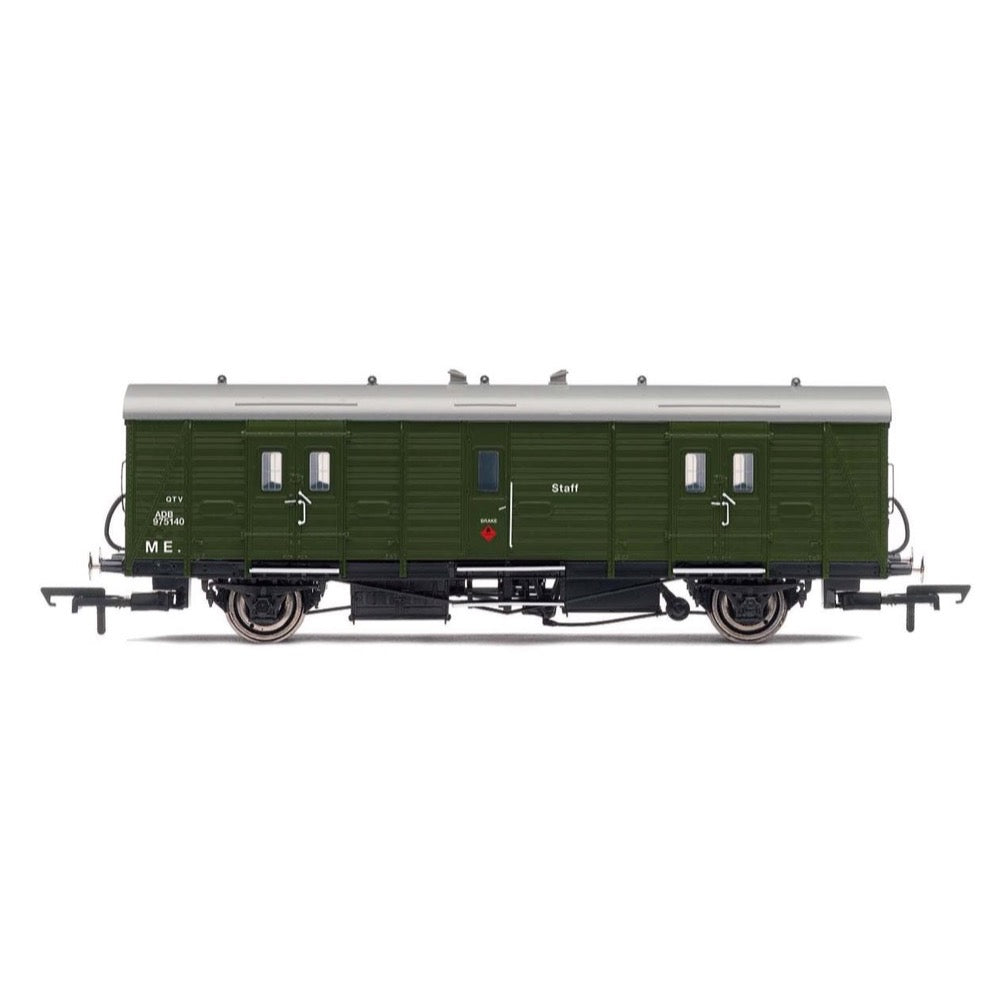
Hornby R60081 OO BR(S) Departmental Van C 975140
Originally built in 1937 as a Southern Railway Van C type passenger brake vehicle, ADB975140 was converted for use as a departmental staff van in 1971.
Specification
- Item Length - Without Packaging (cm): 12
- Item Height - Without Packaging (cm): 5
- Item Width - Without Packaging (cm): 3.5
- Item Scale: 1:76 Scale 00 Gauge
- Finish: Painted
- Colour: Multi
- Operator: BR Departmental
- Designer: BR
- Livery: BR Departmental
- Minimum Curve (mm): Radius 1
- Number of Parts: 1
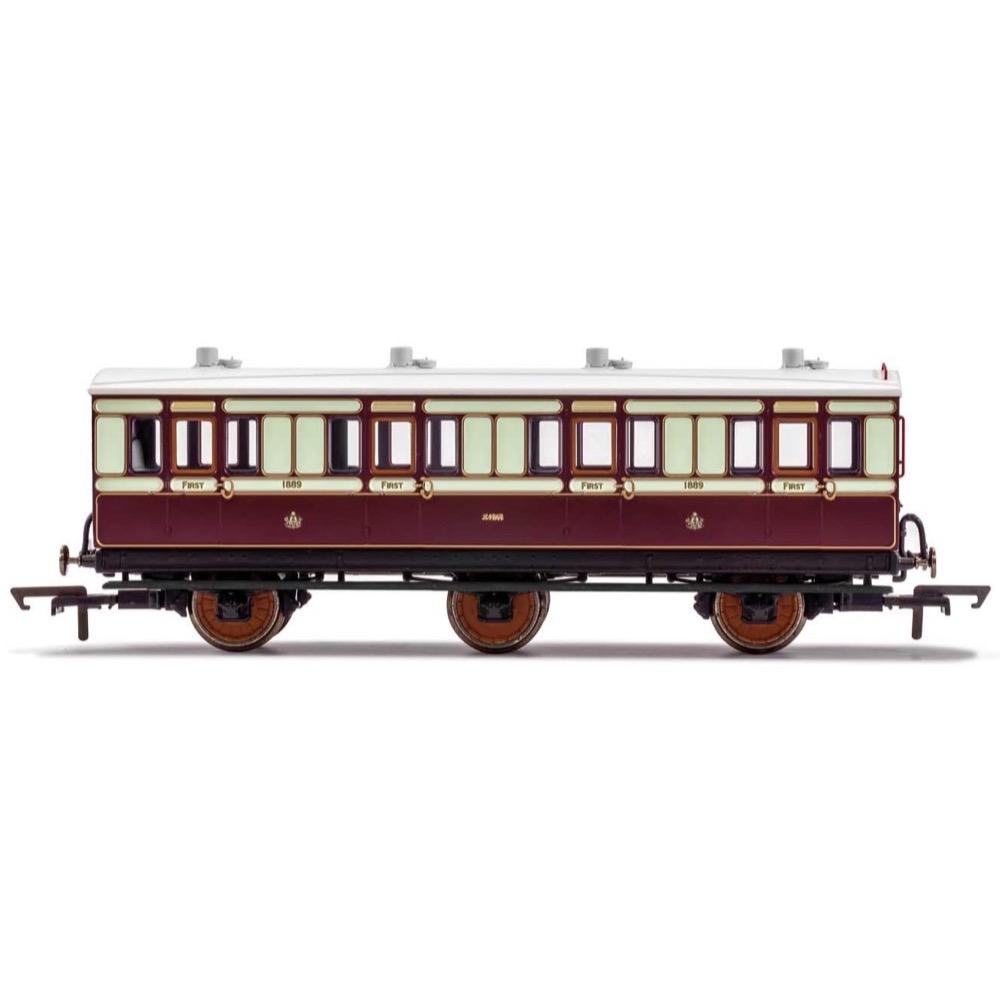
Hornby R40119 OO LNWR 6 Wheel Coach 1st Class Fitted Lights 1889
This Six wheeled coach is a representation of the many which served on the London and North Western Railway (LNWR) in the late 19th and early 20th century.
Small coaches such as this six wheeled coach proved especially good at branch line work where their small size enabled the traversing of tight radius curves, whilst lower passenger numbers meant their small size was more acceptable and enabled trains to be hauled by smaller engines.
This LNWR coach is modelled as having step boards to enable access at stations with low platforms and oil lamp lighting. This model also features our new Maglight system which allows coach lights to be turned on and off using a magnetic wand, removing the need for track pick-ups which would increase rolling resistance.
Specifications
- Item Length - Without Packaging (cm): 16
- Item Height - Without Packaging (cm): 5
- Item Width - Without Packaging (cm): 3.5
- Item Weight - Without Packaging: 0.07
- Item Scale: 1:76 Scale 00 Gauge
- License: No
- Finish: Painted
- Colour: Red
- Gauge: OO
- Operator: LNWR
- Livery: LNWR
- Minimum Curve (mm): Radius 2
- Number of Parts: 1
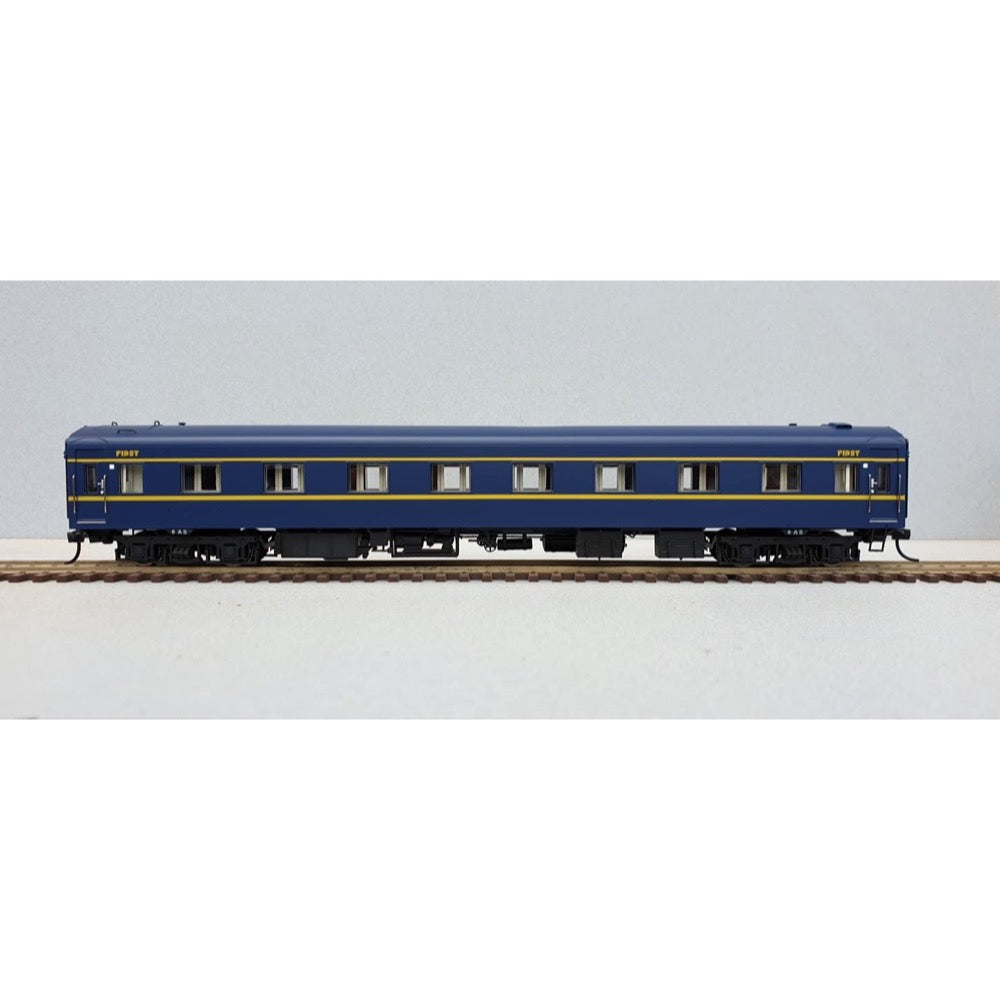
Powerline PC-403C HO 8 AS VR Blue & Gold S Type Carriage First Art Deco
Powerline PC-403C HO 8 AS VR Blue & Gold S Type Carriage First Art Deco
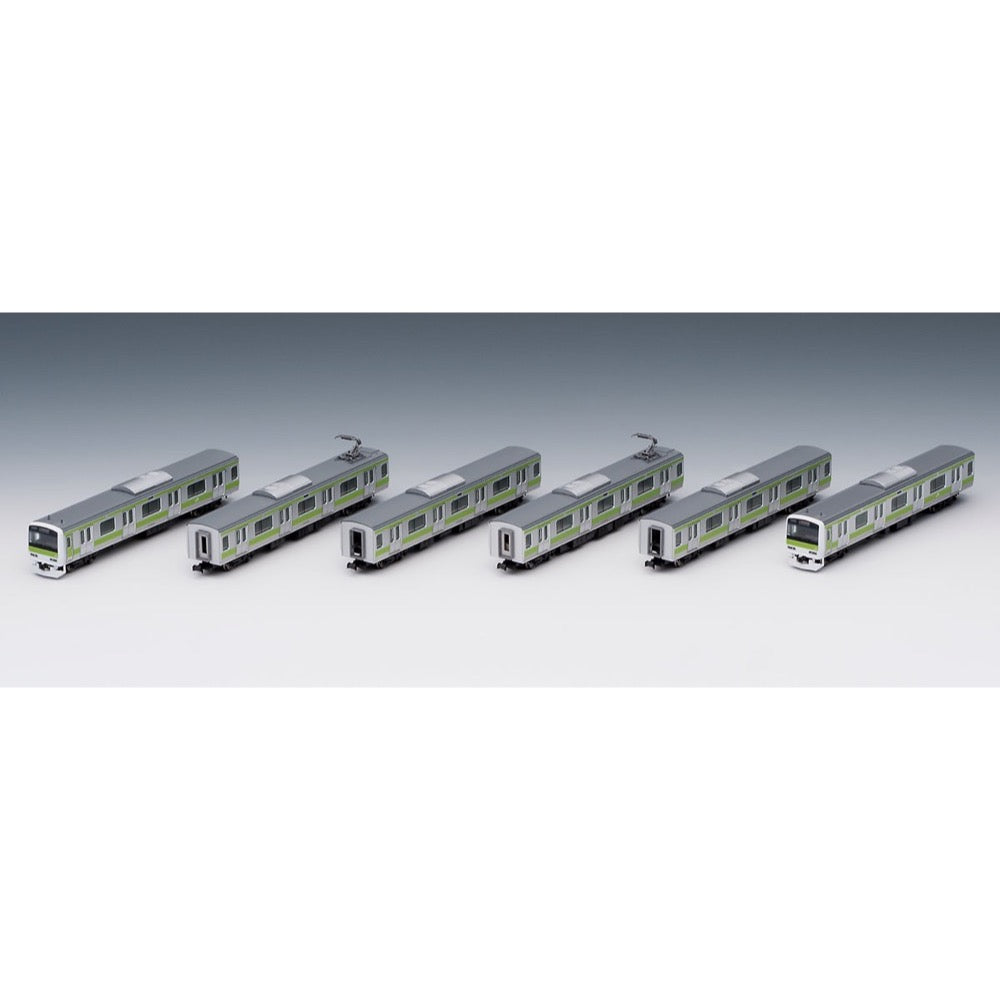
Tomix 98716 N E231-500 Commuter Train Yamanote Line Basic 6 cars pack
The E231-500 series was introduced in 2002 for the Yamanote Line.
Two six-door cars were coupled in a train, but they were replaced with four-door cars by 2017 to accommodate movable platform gates.
After the successor E235 series was introduced in 2017, they were gradually transferred to local trains on the Chuo and Sobu lines, and ceased operation on the Yamanote Line in January 2020.
Features
- Renewal of E231-500 Yamanote Line
- New motor (M-13) adopted
- Newly produced light-shielding case, see-through driver's cab
- Newly produced underfloor of Moha E231-500 and Moha E230-500
- Side exterior speakers are expressed in three dimensions with sculpture
- Reinforced skirt attached
- Car number can be selected and transfer sheet included
- 11-car full formation can be reproduced by combining this product (cars 11, 9, 8, 6, 5, 1) with the <98717> add-on set
- Side green glass reproduced
- Head and tail lights and front display part are equipped with constant lighting board, lit by white LED
- Front display part is replaceable with printed parts attached, replacement printed parts included
- JR mark is printed
- Flywheel-equipped power adopted
- New current collection system, black wheels adopted
Vehicles
- Kuha E231-500
- Moha E231-500(T)
- Moha E230-500
- Moha E231-500(M)
- Moha E230-500
- Kuha E230-500
Accessories
- Runner parts: Lightning arrester
- Runner parts: Train radio antenna, etc.
- Runner parts: Front display parts
- Transfer sheet: Car number, etc.
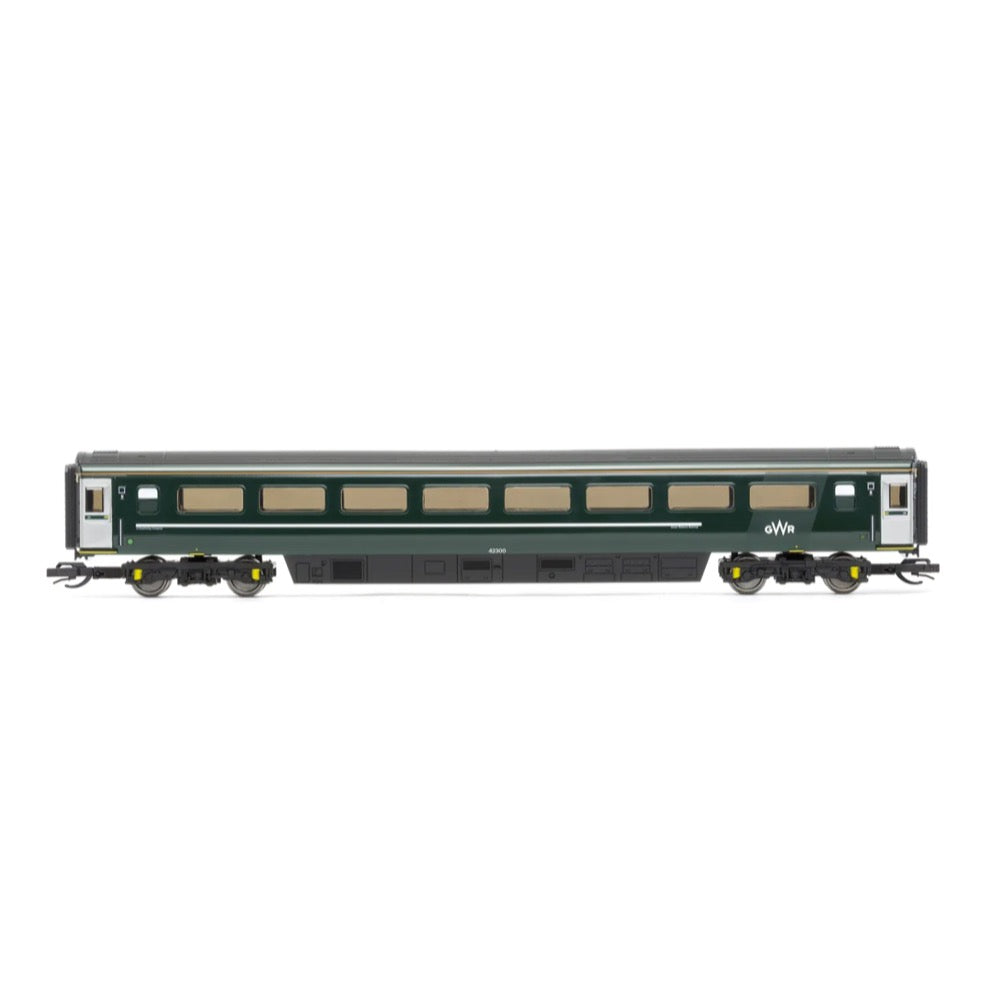
Hornby TT4031C TT GWR Mk3 Trailer Standard Open 42300
In-order to allow running at 125 mph on Britain's Victorian era railways, new rolling stock was needed by British Railways. Significant improvements over the Mk2 included new secondary air suspension between the bogies and the coach body as well as aerodynamic skirting on the underframe.
Mk3 coaches are 75ft (23m) long, enabling far greater capacity than older coaches. Mk3 coaches also incorporate disk brakes and wheel slip protection enabling faster deceleration. The first Mk3 coaches to be delivered were used as part of the HST prototype along with the two Class 41 diesel power cars in 1972. Mk3 coaches entered service in 1975 along with the Class 43 forming the iconic InterCity 125 trainset. After the HST Mk3 coach variant was introduced, further Mk3 coaches were introduced to the West Coast Mainline for use as part of locomotive hauled trains. Whilst Mk3 stock is standard for HST units, the standard locomotive hauled stock is Mk3a. Mk3a stock differs from Mk3 stock due to the inclusion of buffers as well as a different electrical system that uses motor generator units in each coach to power air conditioning and other ancillaries Mk3a stock was built until 1984, before 3B stock with improved seating and lighting was built from 1985 to 1988.
Some 40 years after introduction the Mark 3 coaches and Class 43 units are still in service. One of the most prominent users of the train is the GWR, with their Class 255 Castle sets made up of two 43 units and four coaches. These units were refurbished between 2018 and 2020 to make 12 trains, with the first being introduced in March 2019.
Specifications
- Item Length - Without Packaging (cm): 19
- Item Height - Without Packaging (cm): 2.2
- Item Width - Without Packaging (cm): 2
- Item Weight - Without Packaging: 0.05
- Item Scale: 1:120 Scale
- Finish: Painted
- Colour: Green
- Gauge: TT
- Operator: GWR
- Designer: BR
- Livery: GWR Green
- Minimum Curve (mm): Radius 1
- Number of Parts: 1

Hornby R40214 OO BR Departmental ex-Mk1 BCK Test Coach Mercury RDB975280
Test Coach 18 'Mercury' was used to test the track based transponders utilised by the C-APT system. Throughout 1974 'Mercury' would be coupled to almost any available West Coast Mainline train many times per day.
Includes
- 1x Rolling stock Coach
Technical Specifications
- Item Length - Without Packaging (cm): 26.5
- Item Height - Without Packaging (cm): 5
- Item Width - Without Packaging (cm): 3.5
- Item Weight - Without Packaging: 0.14
- Item Scale: 1:76 Scale
- Finish: Painted
- Color: Red
- Gauge: 00
- Operator: BR
- Designer: BR
- Livery: BR Departmental
- Minimum Curve (mm): Radius 2
- Number of Parts: 1


